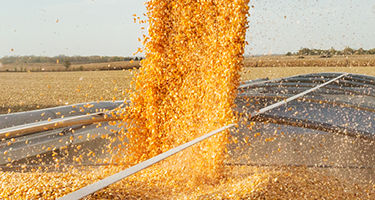IMPORTANT: Trait rating scores provide key information useful in selection and management of Pioneer® brand products in your area. Information and ratings are based on comparisons with other Pioneer brand products, not competitive products. Information and scores are assigned by Pioneer Research Managers. Scores are based on period-of-years testing through 2019 harvest and were the latest available at time of printing. Some scores may change after 2020 harvest. Scores represent an average of performance data across areas of adaptation, multiple growing conditions, and a wide range of both climate and soil types, and may not predict future results. Individual product responses are variable and subject to a variety of environmental, disease and pest pressures. Please use this information as only one component of your product positioning decision. Refer to www.pioneer.com/ca-en or contact a Pioneer sales professional for the latest and most complete listing of traits and scores for each Pioneer brand product.
HERBICIDE RESISTANCE: Varieties with the glyphosate tolerant trait (including those designated by the letter “R” in the product number) contain genes that confer tolerance to glyphosate herbicides. Glyphosate herbicides will kill crops that are not tolerant to glyphosate. Always follow grain marketing, stewardship practices and pesticide label directions. Varieties with the Genuity® Roundup Ready 2 Yield® (RR2Y) trait contain genes that confer tolerance to glyphosate, the active ingredient in Roundup® brand agricultural herbicides. Roundup® brand agricultural herbicides will kill crops that are not tolerant to glyphosate. Varieties with Genuity® Roundup Ready 2 Xtend™ (RR2X) technology contain genes that confer tolerance to dicamba and glyphosate. Dicamba will kill crops that are not tolerant to dicamba. Genuity®, Roundup®, Roundup Ready 2 Yield® and Roundup Ready 2 Xtend™ are trademarks or registered trademarks of Monsanto Technology LLC used under license. Individual results may vary, and performance may vary from location to location and from year to year. This result may not be an indicator of results you may obtain as local growing, soil and weather conditions may vary. Growers should evaluate data from multiple locations and years whenever possible. Varieties with BOLT® technology provide excellent plant-back flexibility for soybeans following application of SU (sulfonylurea) herbicides. Varieties with the LibertyLink® (LL) gene are resistant to Liberty® herbicide. Liberty®, LibertyLink® and the Water Droplet are trademarks of BASF. Enlist E3™ soybeans contain the Enlist E3 trait that provides crop safety for use of labelled over-the-top applications of glyphosate, glufosinate and 2,4-D herbicides featuring Colex-D® technology when applied according to label directions. Following burndown, the only 2,4-D containing herbicide products that may be used with Enlist™ crops are products that feature Colex-D technology and are expressly labelled for use on Enlist crops. 2,4-D products that do not contain Colex-D technology are not authorized for use in conjunction with Enlist E3 soybeans. WARNING: Enlist E3 soybeans are tolerant of over-the top applications of glyphosate, glufosinate, and 2,4-D. Accidental application of incompatible herbicides to this variety could result in total crop loss. When using 2,4-D herbicides, grower agrees to only use 2,4-D products that contain Colex-D technology authorized for use in conjunction with Enlist E3 soybeans. Always read and follow herbicide label directions prior to use. Enlist 1™ and Enlist Duo™ are the only 2,4-D products authorized for use with Enlist crops. Consult Enlist herbicide labels for weed species controlled. Additional product-specific stewardship requirements for Enlist crops, including the Enlist™ Product Use Guide, can be found at www.EnlistCanada.ca Always read and follow label directions. The transgenic soybean event in the Enlist E3™ soybean was jointly developed and owned by Dow AgroSciences LLC and M.S. Technologies, L.L.C. ® ™ Enlist, Enlist E3, the Enlist E3 logo, and Colex-D are trademarks of The Dow Chemical Company (“Dow”) or an affiliated company of Dow. Excellence Through Stewardship is a registered trademark of Excellence Through Stewardship. (-) = Variety does not contain a herbicide resistant gene.
SCN RESISTANCE SOURCE: There are three sources of genetic resistance to SCN currently deployed in the marketplace: PI88788; PI548402 (also known as Peking); and PI437654 (also known as Hartwig); R = Resistant
RELATIVE MATURITY: Shows the relative maturity group rating, with the first digit representing the general maturity group, and the second digit showing relative maturity within the group on a scale of 0 to 9, with 0 early and 9 late. For example, a soybean variety with a relative maturity rating of 17 would be a mid-late variety in Group I maturity.
FIELD EMERGENCE: Rating based on speed and strength of emergence in sub-optimal temperatures. 7-9 = Excellent; 4-6 = Average; 1-3= Below Average.
PHYTOPHTHORA RESISTANCE GENE: (-) = No specific gene for resistance. 1a = Provides resistance to races 1-2, 10-11, 13-18, 24 1c = Provides resistance to races 1-3, 6-11, 13, 15, 17, 21, 23, 24, 26, 28-30, 32, 34, 36 1k = Provides resistance to races 1-11, 13-15, 17, 18, 21-24, 26, 36, 37 3a = Resistant to races 1-5, 8-9, 11, 13-14, 16, 18, 23, 25, 28-29, 31-35, 39-41, 43-45, 47-52, 54 6 = Provides resistance to races 1-4, 10, 12, 14-16, 18-21, 25, 28, 33-35 6 PHYTOPHTHORA FIELD TOLERANCE: Varieties with high tolerance scores have demonstrated an ability to thrive in the presence of Phytophthora races to which they lack specific resistance. In some varieties, tolerance is expressed only after the early seedling growth stage, making such varieties susceptible to damping off during emergence and early seed growth.
SOYBEAN CYST NEMATODE [SCN]: Resistance to each of the major SCN races is scored on a 1-9 scale. 9-8 = Excellent resistance; 7 = Very good resistance; 6 = Good resistance; 5 = Average resistance; 4 = Below average resistance; 3-2 = Susceptible; 1 = Highly susceptible; to the specific race indicated.
WHITE MOULD: Scores based on Pioneer research observations of comparative white mould tolerance among various soybean varieties across multiple locations and years. All varieties are capable of developing white mould symptoms under severe infestations. To our knowledge, there are no totally resistant varieties in the industry. However, differences exist in the ability of varieties to tolerate white mould (i.e., the rate at which the infection develops and the extent of damage it causes). These scores reflect those differences.
CANOPY WIDTH: 9 = Extremely bushy; 1 = Very narrow.
PLANT HEIGHT FOR MATURITY: 9 = Tall; 1 = Short.
PER CENT PROTEIN AT 13% MOISTURE: Compare data within table only. Values can vary widely by growing season and region.
PER CENT OIL AT 13% MOISTURE: Compare data within table only. Values can vary widely by growing season and region.
HILA COLOUR: BL = Black; BR = Brown; G = Grey; IB = Imperfect black; TN = Tan; BF = Buff; Y = Yellow (Clear).
SEED SIZE RANGE: Expressed in seeds per pound under normal growing conditions. Range is calculated over multiple years and locations. Since seed size may vary by growing season and region, check the “seeds/pound” information printed on the bag
HERBICIDE PRODUCT MANAGEMENT GUIDE: This guide can assist you in managing herbicide programs with Pioneer® brand soybeans. Pioneer uses molecular markers, lab, and/or field testing to evaluate soybean variety tolerance to several herbicides.
• Research has shown good correlation between molecular markers and varietal response to preplant or pre-emergence applications of the PPO herbicides sulfentrazone and saflufenacil, but low correlation with response to the PPO herbicide flumioxazin (e.g. Guardian Plus WDG, Valtera) when the herbicides are used at normal field rates.
• Research has also shown good correlation between lab assays and field tolerance to preplant and preemergence applications of metribuzin.
Please note that these ratings are not correlated with tolerance to exposure or application of these herbicides after soybean emergence. Metribuzin, and all PPO herbicides can injure soybeans when applied after emergence. Crop injury can also occur when metribuzin or PPO-treated soils are splashed onto soybean stems, cotyledons, or foliage.
Challenging environments such as heavy rainfall during seed germination or seedling emergence; sandy soils, soils low in organic matter or high pH soils; or during periods of excessively cold, hot, dry or wet weather can result in higher herbicide activity or reduced crop tolerance. In such cases, crop injury may occur on varieties rated as having acceptable tolerance to the herbicide. University research indicates herbicides within an herbicide class may vary in their degree of crop selectivity. The potential for herbicide injury may also be impacted by the labeled herbicide rate used and the method or timing of application.
SULFENTRAZONE AND SAFLUFENACIL: Herbicides that contain Sulfentrazone and Saflufenacil include Authority brands, Optill, Integrity and Eragon. Always read and follow herbicide label directions.
METRIBUZIN: Herbicides that contain Metribuzin include Canopy® PRO, TriCor®, Sencor® and Boundary. Always read and follow herbicide label directions. The following herbicide sensitivity ratings are for sulfentrazone, saflufenacil and metribuzin:
Adequate Tolerance: Available research and/or field observations suggest this herbicide is unlikely to result in material crop injury to this particular variety under normal circumstances.
Requires Careful Management: Available research and/or field observations suggest this herbicide may exhibit crop injury to this particular variety in challenging environments.
Response Warning: Available research and/or field observations suggest this herbicide has a high potential for crop injury to this variety.
Insufficient Data: Additional testing is needed to evaluate this variety






